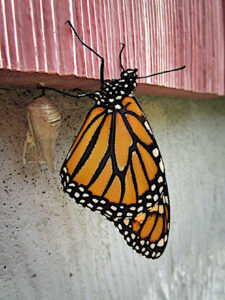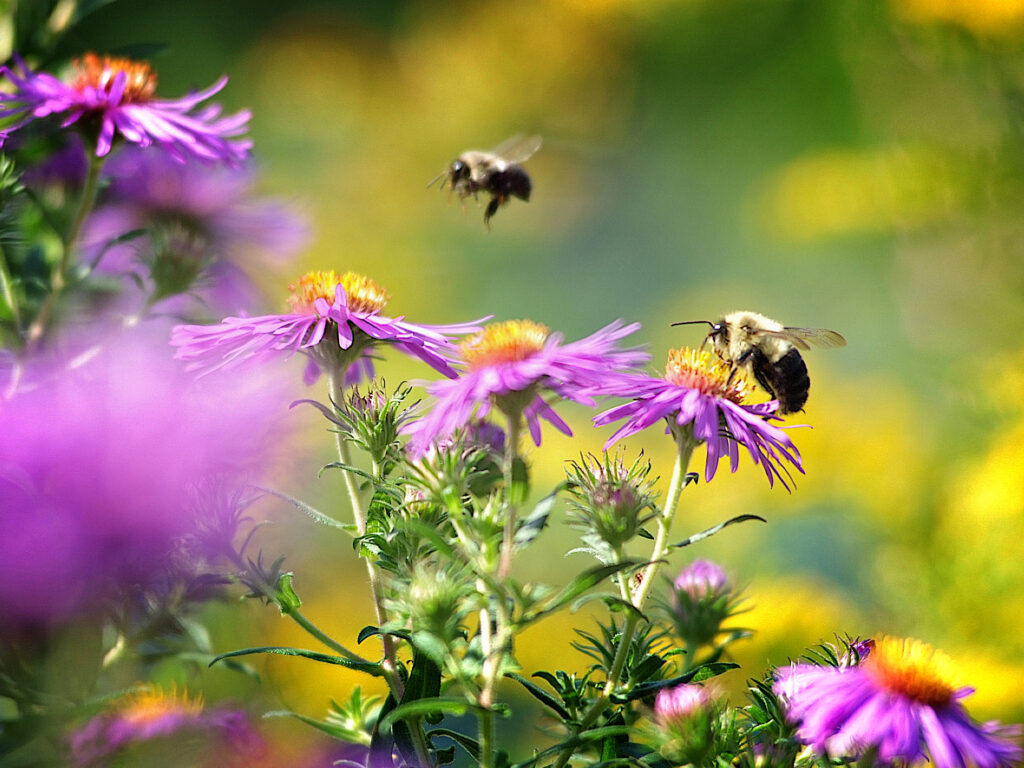Want beautiful, tough plants in your garden?
Carol visited Rockport, MA recently and shows us two tough-as-nails native plants for your garden that also provide habitat for wildlife.

Carol visited Rockport, MA recently and shows us two tough-as-nails native plants for your garden that also provide habitat for wildlife.

Anchored by the chrysalis from which she emerged, a female monarch butterfly clings to the side of my home during the eclosure process of metamorphasis. The chrysalis was formed by a monarch caterpillar who chose a protected spot where the foundation meets the shingles. My home is a National Wildlife Federation Certified Wildlife Habitat in North Easton, MA that has both native butterfly weed (Asclepias tuberosa) and swamp milkweed (Asclepias incarnate). Milkweeds are essential to monarchs, as female monarchs lay their eggs only on milkweed plants. If you want monarchs at your home, milkweeds are not too fussy – and you can start attracting butterflies with just a couple of plants.

Native asters and goldenrod attract native bees at Foxborough Conservation Commission’s Lane Learning Center
According to the National Wildlife Federation, native asters like New England (Aster novae-angliae), New York (Symphyotrichum novi-belgii), smooth (Aster laevis), white wood (Aster divaricatus) and other woodland asters support the entire life cycles of over 110 species of butterflies and moths, so it you want a pollinator garden, these are must-haves. And the good news is that it’s ragweed rather then goldenrod that causes so many allergies in late summer, so plant away!
Goldenrods such as zig-zag (Solidago flexicaulis), showy (Solidago speciosa), seaside (Solidago sempervirens), and anise-scented (Solidago odora) species are the top champions of supporting the entire life cycles of butterflies and moths in New England, supporting 110 species in eastern MA.
More good news is that there are asters and goldenrods that do well in shady and dry conditions, so don’t worry if you’ve not much sun – so get out there and help pollinators by planting the plants they depend upon for their very existence.
Obviously they like goldenrods and asters as pictured above, but even better are native roses, like Carolina (Rosa caroliniana), Virginia (Rosa virginiana), swamp rose (Rosa palustris) and shining (Rosa nitida), plus flowering raspberry (Rubus odorous). As always, before purchasing plants, know your site’s cultural conditions – like sun/shade, soil texture and drainage – and select the best species for your conditions so your investment has the best chance of thriving.
Birds and other animals will thank you for providing habit – like food, shelter and nesting sites – that looks so satisfying to you!